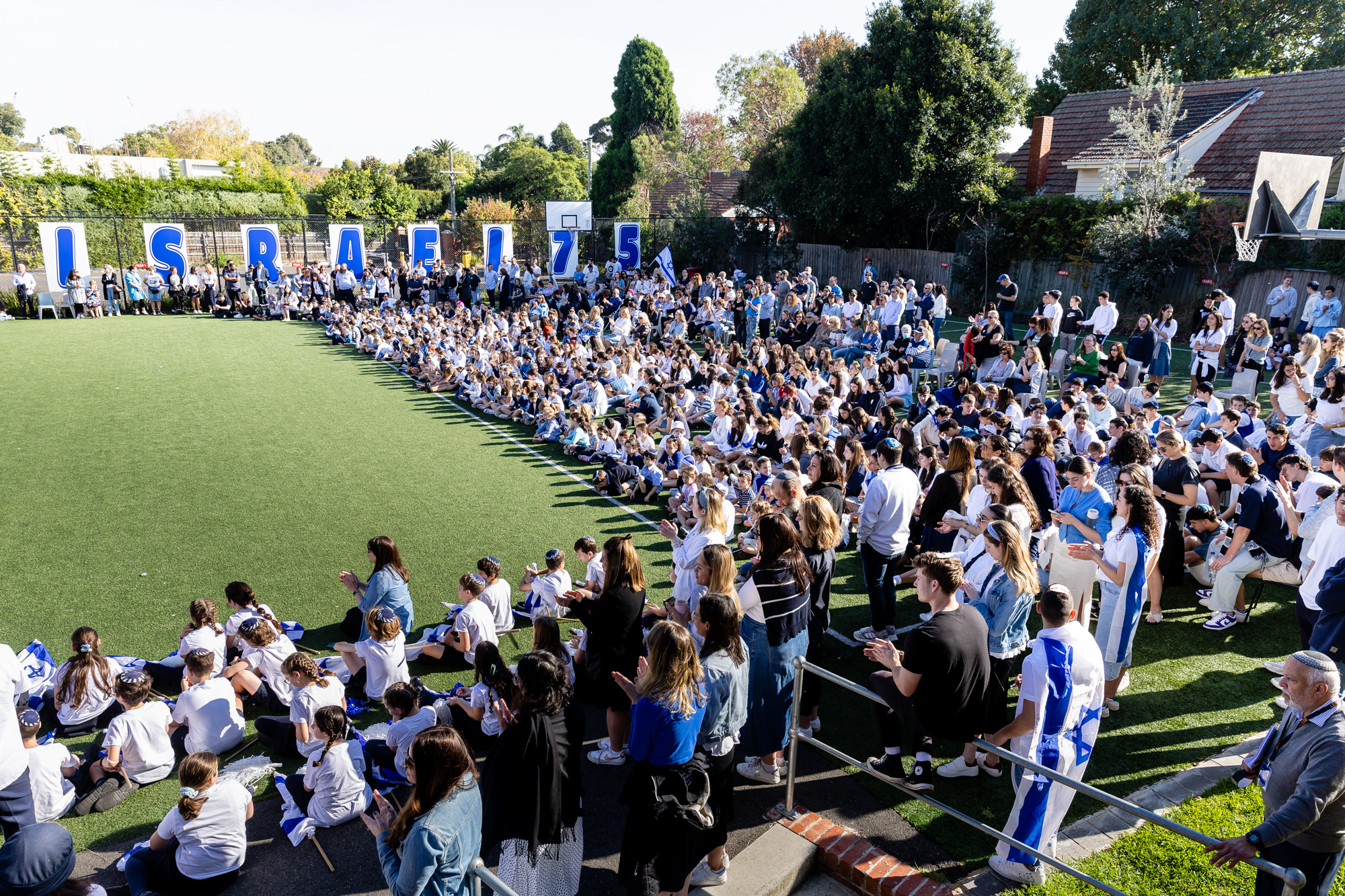
02 May Double Ruach at Yavneh – by Shula Lazar (Principal)
Yavneh is not just a Zionist school, it is Religious Zionist school. Religious Zionism is not a synonym for Zionist and frum (although that is what we are too), but rather a statement on how we view and value the Modern State of Israel. The picture of Rav Kook that adorns our Israel mural near Hamakom is testament to our belief that 1948 was ‘Reishit Tzmchat Geulateinu”, G-d’s jump start to a new phase of Jewish history. Rav Kook, the first Ashkenazi Chief Rabbi of what was then Palestine, wrote and taught Torah and Zionism that was both nationalist and universalist; rigorous in religious practice and open to modern society; traditional and revolutionary. He may have dressed like a chossid and brought Chassidic spiritual fervour to his Jewish practice, but Rav Kook was the ultimate Modern Orthodox Religious Zionist, just like we aspire to be at Yavneh.
While our love for Eretz and Medinat Yisrael is apparent every day, it is especially at this time of year, when we commemorate and celebrate events of recent Jewish History, that we are drawn to think about and articulate our unique perspective and outlook on our history and future.
On Shabbat Chol Hamoed Pesach, right before we begin all the ‘Yoms’, we read the haunting Haftarah of the Valley of the Dry Bones from Yechezkiel 37. There is a machloket in the Gemara (Sanhedrin 92b) as to who the bones were from, when and where they were revived. Rabbi Yehuda states that the entire scene was a mashal (parable) and prophetic vision. And perhaps at that point that is all it was – a vision and hope. But we, as grandchildren and great-grandchildren of Holocaust survivors, know where this valley was and we remember the names of the bones. There are pictures of this valley in our history books, on the walls of Yad Vashem and emblazoned onto our memories. We have also witnessed the conclusion of the prophecy with the return of our people to ‘Admat Yisrael’ through the establishment of our State. We are the generations who have lived this nevuah of Yechezkiel.
But reading this text through the eyes of both Religious Zionism and Modern Orthodoxy, the resonance is yet deeper. In passuk 3, Hashem asks Yechezkiel
בֶּן־אָדָ֕ם הֲתִֽחְיֶ֖ינָה הָעֲצָמ֣וֹת הָאֵ֑לֶּה
Can these bones come to life?”,
to which Yechezkiel answers
אֲדֹנָ֥י יֱהֹוִ֖ה אַתָּ֥ה יָדָֽעְתָּ
“Hashem, you know (the answer to that question)”.
Immediately Hashem tells Yechezkiel to take action, for him to prophesise and speak to the bones and through the words of the prophet do the bones gain life. This here is a symbolic example of the partnership between Hashem and the Jewish people, where G-d’s hand and man’s action work together to bring vision into reality. The Modern State of Israel is a prime example of this; as religious Zionists we celebrate and give thanks to Hashem for its establishment, and also salute and are forever indebted to the Zionist fathers and mothers who worked politically and physically to create a state in ‘Admat Yisrael’, filled with our people who were brought back to life with sinews, flesh, skin and ruach.
For that is the ‘milah mancha’ (key word) of the passage; Ruach. It is not enough to live with a body, we need to live with a spirit too. Commenting on the double use of ‘ruach’ in the prophecy, R. Mendel Hirsch explains that the first ruach would be enough of a ‘life force’, enabling the bones live again and find connection. The second ruach is the ruach of Torah, the spirit which forms the soul of Am Yisrael. One ruach enables our lungs to breathe, the second enables our souls to sing; the ruach of the physical and spiritual together bring life to our people.
It is always a privilege to witness and be part of this double ruach at Yavneh. The double ruach of Zionism, and Religious Zionism; the double ruach of modernity and orthodoxy. And the way in which all this spirit converges into a cacophony of festivity on Chag Haatzmaut. For at Yavneh that is what it is; it is not just a ‘yom’ – it is a Chag! – full of historical and religious significance and of course, infused with that infectious Yavneh ruach! I’m sure Rav Kook would be ever so proud of the way in which we have commemorated and celebrated this week.
A huge thank you to our Jlife team, Tzevet and all Yavneh staff for making our ‘Yoms’ at Yavneh so wonderfully memorable!




